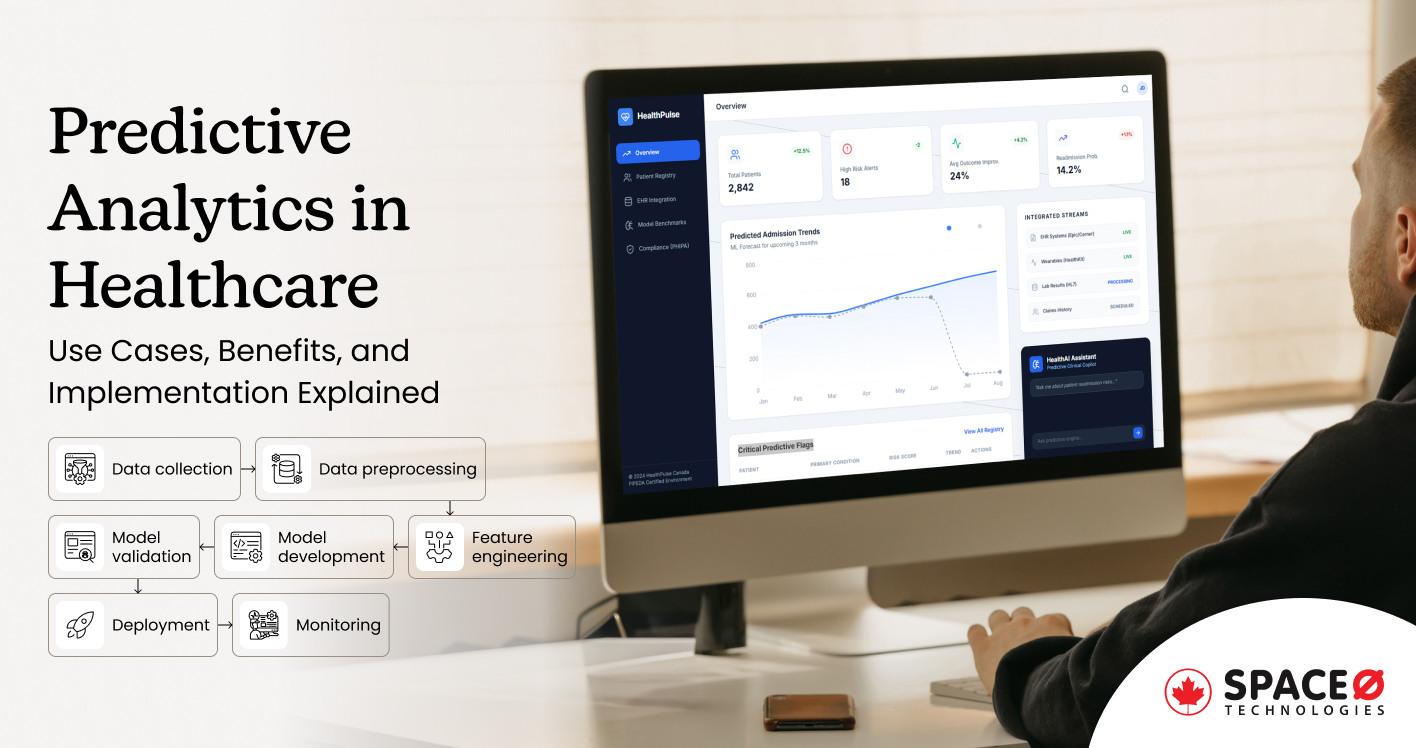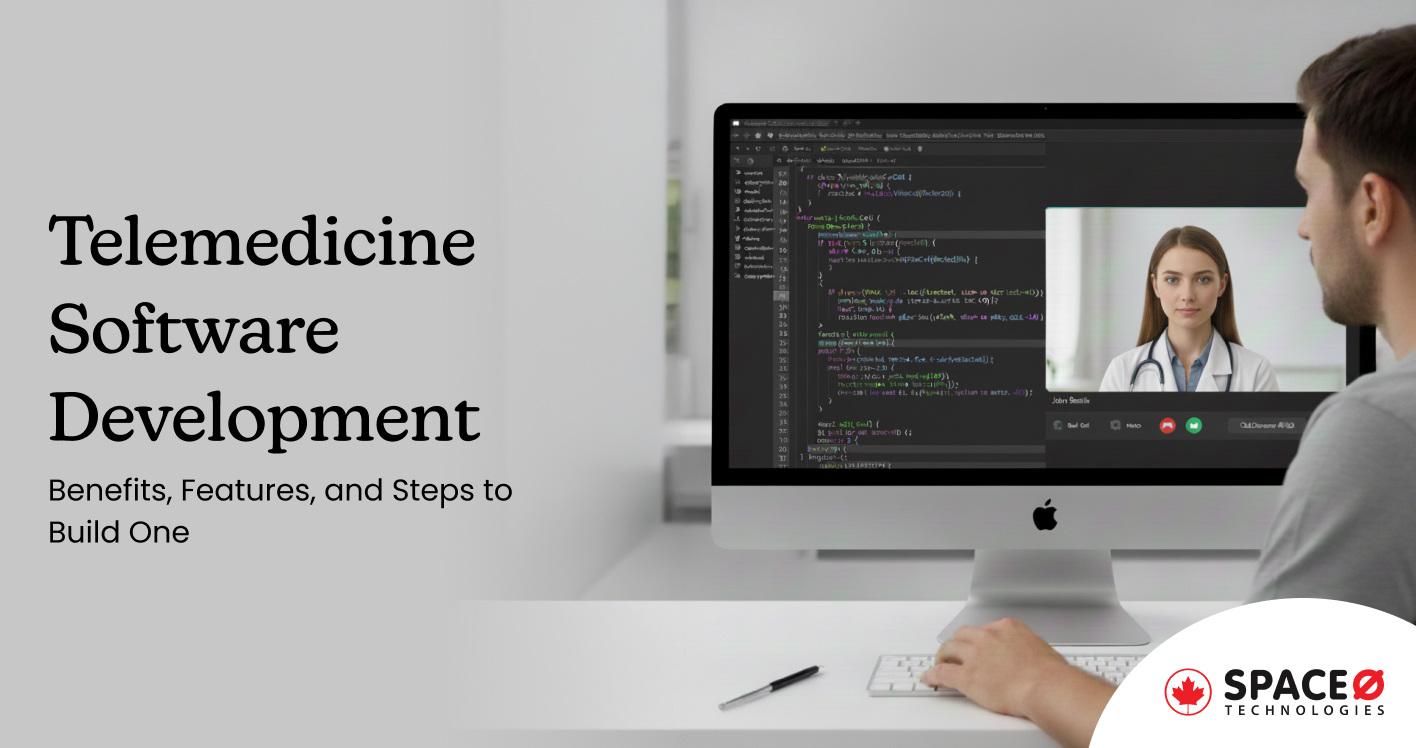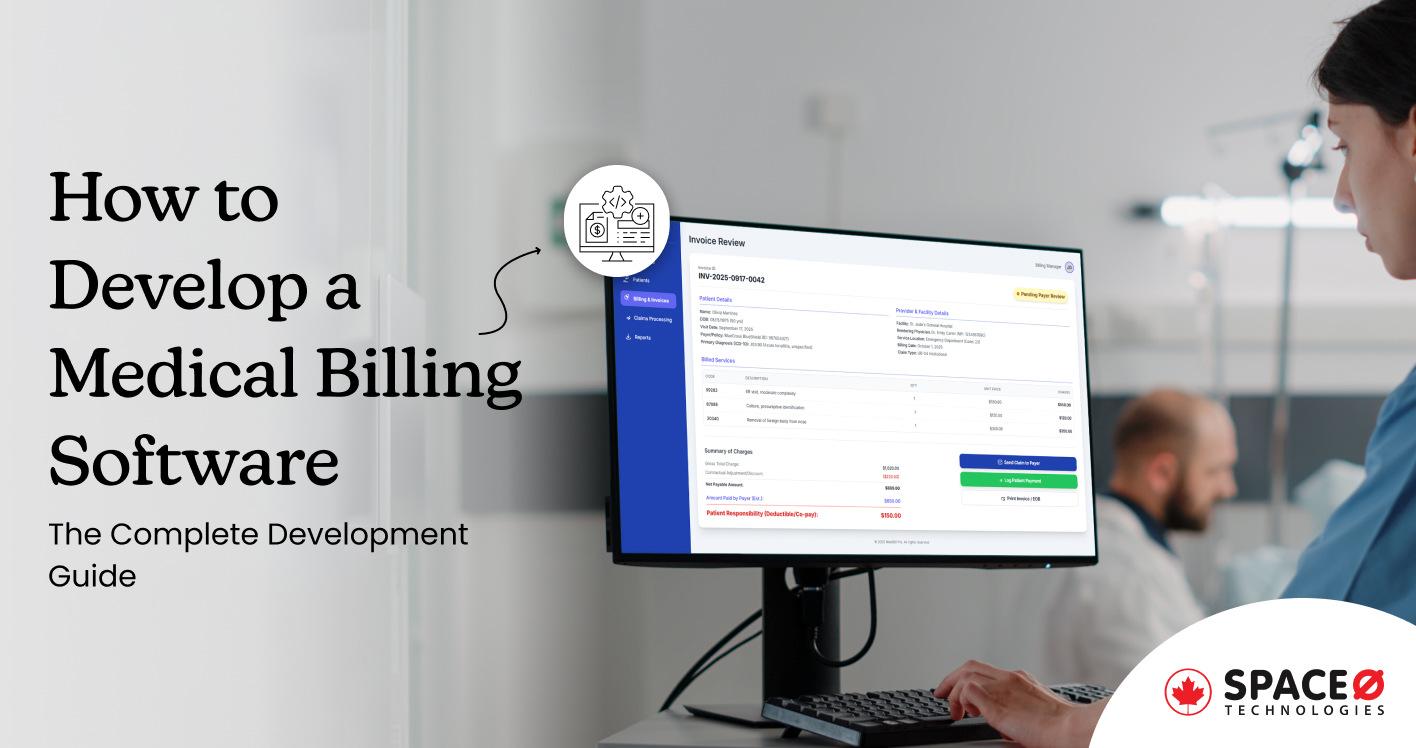
Different Software Testing Types That You Must Know
If you have developed a software solution, you might want to know whether your software works fine or not.
To ensure that your software solution works well, you might have to carry out software testing.
But, how do you ensure which software testing types are important to perform before deploying your software?
Whether you are a novice tester or an experienced software tester, you must know about the important software testing types.
Being a software development services provider, we develop custom software solutions and apps for our clients and ensure the solutions are bug-free and secured. We understand the importance of conducting different types of testing and making the software reliable.
That’s why in this blog we have covered what you should know.
You will learn about the following sections:
- Which are the main methods of software testing?
- What is functional testing and its types?
- What is non-functional testing and its types?
- Which are the different types of software testing?
Without further ado, let’s dive into this blog.
First, let’s quickly discuss the two main methods of software testing in detail.
Table of Contents
Which are the Two Main Methods of Software Testing?
Software testing is mainly divided into two main methods that govern your testing infrastructure and the required tools.
Manual Testing
The manual testing method involves a tester who manually assesses the software solution for bugs and issues. The software testers do not use any automated tools or infrastructure to assess the software solution.
How Does Manual Testing Work?The QA uses the defined test objective to write the test script. Each test case is defined for a particular scenario. The testing process involves the test engineer verifying the software’s behaviour against the expected outcome to check for bugs.
Here are the five stages of manual testing:
- Unit Testing: The testing team verifies the individual units of the source code.
- Integration Testing: Multiple units are integrated to get tested together.
- System Testing: This test verifies if the system meets the desired requirements.
- UI Testing: GUI testing to check if the software interacts with the user in the desired manner.
- Acceptance Testing: To assess if the whole system functions as required in the real world.
Want to Develop a Secured and Bug-free Software Solution?
Space-O has experienced software developers and testers to create applications as per your expectations. Let’s connect.

Automated Testing
In this testing method, automation tools are used to assess the performance and quality of the developed software. The test case suites are executed by a QA engineer or software testing team that sits in front of the computer to check the flaws in the software solution.
How Does Automation Testing Work?The QA engineer must create a software testing suite and enter it into the automation testing tool. Once the test suite is automated, you can run several tests on them. The developer can replay, check and improve the software as required.
Here are the five steps of the process of automation testing:
- Test tool selection: The development team chooses the suitable testing tool to automate the process.
- Scope of Project: Identify the end goals and objectives of the testing process. Determine the suitable outcomes.
- Design and Development: Create the test cases, plan the in/out scope for automation and determine the deliverables.
- Execution: Add the input data to the test scripts and set them for execution.
- Maintenance: It is important to keep assessing the test suite to determine if you need new functionalities to be added for testing.
Manual testing can further be divided into two different segments. Let’s discuss these two types in detail.
Which are the Two Main Categories of Manual Testing?
During the software testing life cycle, we perform manual testing to develop and deliver bug-free software solutions. Based on our experience of developing issues-free applications, we have bifurcated the manual testing for your better understanding.
There are two categories of manual testing:
- Functional
- Non-functional
As the name suggests, functional involves user interactions, the unit on the interface and communication between the backend and front. Non-functional, on the other hand, involves testing the speed and performance of the application.
Functional Testing
Functional testing is software testing where the software solution is evaluated against the software requirements. Each function is tested in this software testing process by adding the appropriate input to check for the outcomes.
You test the following factors:
- Main functions
- Accessibility
- Interface usability
- Error conditions
Non-functional Testing
In this testing technique, the automation testing tools are used to assess the non-functional factors such as performance, usability, reliability and speed of the software product. The software testing type determines if the system is ready for launch.
You test the software product for the following factors:
- Security
- Availability
- Reliability
- Usability
- Scalability
- Interoperability
- Efficiency
- Reusability
Which are the Different Types of Functional Testing?
Here are 8 different types of functional tests that you need to conduct to check if the software is bug and risk-free.
Unit Testing
This is a white box testing technique that is used to evaluate the smallest units in a software solution against a software requirements specification document. It breaks down the entire testing procedure into smaller phases so that you can test each individual component properly.
What are the Advantages of Unit Testing?
- Early identification of bugs in the code
- Debugging becomes easy in the code
- Interface usability
When to Use Unit Testing?
You can perform unit testing when:- Develop a new software application
- You are working with a code that is difficult to test manually
- Writing critical code in a software application
Integration Testing
In the integration testing method, the developer will integrate the individual components to assess the behaviour. Integrating the units will cause data to flow between modules to determine the flaws in the data flow.
What are the Advantages of Integration Testing?
- Increase the overall test coverage of the software application
- Detect the code integration issues at the early stage
- Ensure that new code changes do not break existing functionalities
When to Use Integration Testing?You need to perform integration testing when:
- You are working with code that needs to get integrated with another system
- You want to ensure that all the individual code components work well in group
User Interface Testing
User interface testing is a type of testing that helps to identify the issues in the graphical user interface. User interface testing involves testing of layout, formatting, and navigation within your software application. By performing user-interface testing, you ensure that the software is user-friendly and easy to use.
What are the Advantages of User Interface Testing?
- Improves the overall user interface of your software application
- Detects the GUI issues at the early stage of your development
- Ensure that the code of the software application sync perfectly with UI
When to Use User Interface Testing?Perform the UI testing when:
- You are building a software application that highly involves the UI part
- You are writing a code of the application that involves UI part
System Testing
In system testing, all the modules are combined and treated as an entire system. Usually, system testing is performed after unit, integration, and UI testing. The testing team performs the system against pre-requisite requirements and objectives in a test environment to check if the application is ready for deployment.
What are the Advantages of System Testing?
- Ensure that the software application is able to handle sudden large volumes of data
- Ensure that your overall system is built with quality
- Offers an extensive perspective of the entire software product
When to Use System Testing?You should perform system testing when:
- You want to ensure that the system works and meets the specified software requirements
- You want to make sure that the multiple components in the group work fine as expected
Regression Testing
This functional testing technique ensures that a stable product is released despite the numerous code commits and changes made by the developers. The test is conducted to assess if the system functions as before despite the changes in the code.
What are the Advantages of Regression Testing?
- Ensures code changes don’t impact the functionality
- Excellent risk mitigation strategy
- Avoids the recurring issues already fixed
When to Use Regression Testing?
- When you want to add a new functionality
- When the codebase or patches are fixed
- When you want to fix performance issues
User Acceptance Testing
User acceptance testing is one of the most important tests. It allows you to know whether your software application meets the end-users requirements or needs. Performing the user acceptance tests allows you to know the application performs as required from the end-user perspective. In addition, it also allows you to know if the software is user-friendly and meets the specified requirements.
What are the Advantages of User Acceptance Testing?
- Ensures there is no misalignment between the testing team and management
- Determines issues that can lead to financial losses
When to Use User Acceptance Testing?You need to perform user acceptance when:
- You want to make sure that the code performed meets the requirements and needs of the end-users.
- You want to ensure that your software application is user-friendly and meets specified requirements.
Smoke Testing
This is a software testing technique that helps evaluate the core functionality of the software product quickly. Performing smoke testing allows you to know whether the application is functioning properly and is stable.
What are the Advantages of Smoke Testing?
- Eliminate 80% of the issues in your software solution before detailed testing
- Improves troubleshooting and increases product efficiency
When to Use Smoke Testing?
- When you want to quickly check to know if the software application functions well before proceeding further.
Sanity Testing
This functional testing type is conducted on the piece of code that has been updated. It ensures that the stable builds are ready for new testing and checks if the new code has led to bugs or issues. It is an unscripted method.
What are the Advantages of Sanity Testing?
- Checks the specific code change alone
- Determines if the build is ready for testing
When to Use Sanity Testing?
- When you want to know if the small code changes haven’t affected the software application.
You now have a proper understanding of all the functional testing types in detail. Now, let’s know the second main type of manual testing which is non-function. Go through the following section to get a detailed understanding.
What are the Different Types of Non-functional Testing?
The non-functional testing solutions help determine if the software has met the security requirements, performs well and offers excellent usability. Here, you will learn all the non-functional testing types in detail.
Performance Testing
This is a series of assessments that help determine if the software product is performing well. It includes assessments such as stress testing, load testing and scalability tests. You can also conduct spike and soak tests to evaluate the performance.
What are the Advantages of Performance Testing?
- Ensures the software solution can scale to its potential
- Releasing a scalable and flexible software product
When to Use Performance Testing?
- You want to know if the software application does not lack performance when actually used.
- You want to ensure the high-end GUI doesn’t slow down your software application.
- You want to ensure that the third-party integration works as expected and the software application performs well.
Reliability Testing
Reliability testing is conducted to ensure that the software is reliable in a real-world environment. It addresses the question of whether or not the software can perform under the set load conditions without crashing.
What are the Advantages of Reliability Testing?
- Assesses if the system can perform for a set period with specific load conditions
- Identifies the software architecture whether fails or not
When to Use Reliability Testing?
- You want to determine the failure patterns or check the main cause for the system failing.
Security Testing
One of the software testing types that can be used to check for vulnerabilities, malware issues and other security hazards in the software product. The test will help determine the potential threats to the software product. This technique includes vulnerability testing, penetration assessment and security audits.
What are the Advantages of Security Testing?
- Determining your cyber security capabilities to enhance it
- Revealing the unknown issues and bugs that you need to fix
When to Use Security Testing?
- You want to know which identified bugs are left to fix
- You want to remove any potential threat if any in your code
- You want to make sure that the application is secure for end-users
Load Testing
This is an integral part of the performance testing your team conducts. The testing includes checking the software’s performance against a predefined load. If there are any anomalies, the development team will fix them. The idea is to check the availability, latency and overall crashes.
What are the Advantages of Load Testing?
- Improves the overall scalability of software
- Ensures minimal cost of failure
- Determines the inefficient codes
When to Use Load Testing?
- You want to ensure that the software performs even in sudden traffic increases
- You want to make sure there are no page load issues within your software
- You want to identify if there are any system lags so that can be fixed
Usability Testing
The glass box testing evaluates if the software solution is easy to use. It is conducted from the end user’s perspective. This testing helps to determine if the designers create the workflow and design aesthetics that are easy for end-users.
What are the Advantages of Usability Testing?
- Ensures the design is in sync with the user’s requirements
- Checks whether performance and usability criteria meet
When to Use Usability Testing?
- You want to ensure that there are no design issues before you release software
- You want to catch the potential issues are might get missed by designers
Compatibility Testing
The software product will be used in different environments, scenarios and devices. The test will check the software product’s compatibility across these environments to ensure they work seamlessly.
What are the Advantages of Compatibility Testing?
- Accelerates the software development process
- Offers seamless experience across devices
- Enhances the browser and device compatibility
- Detect UI, font and other compatibility issues
When to Use Compatibility Testing?
- You want to make sure that your software works properly on all deployed software
- You want to ensure that your software doesn’t provide different outputs of a similar input in different environments
- You want to make your software work perfectly with other software systems
If you are looking for some software development-related blogs then check these other blogs out.
- What is Software Testing?
- Software Testing Life Cycle
This is all about non-functional testing. You have learned all about all types of software testing types in detail.
Want to Hire Software Developers and Testers for Your Project?
Describe your software requirements. Get a consultant with our experienced software developers to create a software solution.
FAQ About Software Testing Types
What is testing in a software development life cycle?
Testing is a crucial part of the software development life cycle. It involves checking if the software product meets the defined requirements and is in sync with the user’s needs. The team will conduct static, structural, and component testing to determine if the solution is usable, reliable and functional.
What is the software testing life cycle?
The software testing life cycle is a set of predefined tasks that help the QA team understand the system’s current state and identify ways to improve it for better usability.
What are the testing techniques?
There are majorly two methods of testing a software product- automated and manual. Manual testing involves testing software with the help of testers. Whereas, automated testing is done through tools and scripts.
Perform Different Software Testing to Make Software Bug-free
In this blog, you have learned about several types of software testing, how different testing types work, and what are the benefits of each. When developing software, it is important to identify the types of software testing your product needs before listing out the test case scenario, defining the environment and identifying the methodologies.
Space-O is a leading software development company, having experience in creating custom software solutions whether you are a startup or an enterprise. If you are looking to develop a software solution for your business or want to launch a software product, let’s get in touch.
Editor's Choice

Predictive Analytics in Healthcare: Use Cases, Benefits, and Implementation Explained

Telemedicine Software Development: A Complete Guide to Building Remote Healthcare Platforms

Medical Billing Software Development: The Complete Guide for Healthcare Providers
All our projects are secured by NDA
100% Secure. Zero Spam
*All your data will remain strictly confidential.
Trusted by


Bashar Anabtawi
Canada
“I was mostly happy with the high level of experience and professionalism of the various teams that worked on my project. Not only they clearly understood my exact technical requirements but even suggested better ways in doing them. The Communication tools that were used were excellent and easy. And finally and most importantly, the interaction, follow up and support from the top management was great. Space-O not delivered a high quality product but exceeded my expectations! I would definitely hire them again for future jobs!”

Canada Office
2 County Court Blvd., Suite 400,
Brampton, Ontario L6W 3W8
Phone: +1 (437) 488-7337
Email: sales@spaceo.ca

